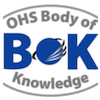Chapter 8.2: The Human - Basic Principles of Social Interaction
Abstract
Aspects of how humans interact with one another socially are important for Occupational Health and Safety (OHS) practice because all work tasks involve some kind of human element, whether in completing the tasks, being part of a workgroup or planning how to perform work. OHS can be affected by how we communicate with one another, treat one another in groups, and influence each other’s behaviours and attitudes. These elements, along with how people obey commands, assume powerful roles and affect group decision making, are considered in this chapter.
Keywords: group dynamics, leadership, group decision making, social identity theory, attribution theory, social comparison theory, group membership, social norms and group pressure to conform, performance, power, compliance, attitudes, conflict resolution, procedural and distributive justice
First year of publication: 2012
Current Version: 2012
Chapter 8.2: The Human - Basic Principles of Social Interaction
Table of contents
| 1 | Introduction |
| 2 | Historical development of social psychology |
| 3 | Understanding social psychology in an OHS context |
| 4 | Perceiving individuals |
| 4.1 | Attribution theory |
| 4.2 | Biases in attributing causes to the actions of others |
| 5 | Self in relation to others: Social comparison theory |
| 6 | Group membership |
| 6.1 | Ingroups and outgroups |
| 6.2 | Social identity and self-categorisation theories |
| 6.3 | Stereotypes, prejudice and discrimination |
| 6.4 | The contact hypothesis |
| 6.5 | Changes in self-categorisation |
| 7 | Norms and group pressure to conform |
| 8 | Task performance |
| 8.1 | Decision-making biases |
| 8.2 | Group task performance |
| 9 | Power |
| 9.1 | Compliance |
| 9.2 | Sources of power |
| 9.3 | Obedience to authority – the Milgram experiments |
| 10 | Attitudes and behavior |
| 10.1 | The theory of planned behavior |
| 11 | Attitude change |
| 11.1 | Cognitive dissonance theory |
| 11.2 | Persuasion theory |
| 12 | Understanding and resolving conflict |
| 12.1 | Competition and cooperation |
| 12.2 | Conflict management styles |
| 12.3 | Roles during conflict |
| 12.4 | Distributive and procedural justice |
| 13 | Implications for OHS practice |
| 14 | Summary |
Key thinkers and useful references
References
Bill has 26 years experience in organisational behaviour, organisational development, and occupational health, safety and wellbeing psychology. He has held positions as university lecturer, managing director of a psychological services consultancy, staff development manager, and with an OHS regulator. Bill is the Australian representative on the International Coordinating Group for Occupational Health Psychology and a member of the Safety Institute of Australia, the European Academy of Occupational Health Psychology, and the International Association of Applied Psychology. Also, he is affiliated with the American Psychological Society and the (American) Society for Occupational Health Psychology.
Carlo Caponecchia BA (Psych), PhD (Psychology) Lecturer, School of Aviation, University of New South Wales
An expert on psychological hazards at work, Carlo teaches in the area of workplace safety and risk management. His research interests include human factors issues (fatigue, stress, bullying); risk perception, communication and behaviour; and error classification. Carlo has provided consultancy advice to several industries on safety-related projects and is involved in training, independent workplace investigations and organisational development. He is a member of the APS Occupational Health Psychology Interest Group and convenes the Risk Management Interest Group in the International Association for Workplace Bullying and Harassment.
Eleanor H. Wertheim MA, PhD, FAPS Professor (Personal Chair), School of Psychological Science, La Trobe University
Eleanor teaches in the La Trobe University professional psychology program and conducts research on cooperative approaches to resolving conflict. She is first author of Skills for Resolving Conflict, and has provided professional development expertise to a wide range of professional groups, United Nations staff and international diplomats. Eleanor is a Fellow of the Australian Psychological Society (APS) a member of the national executive committee of the APS Occupational Health Psychology Interest Group.
No learning outcomes have been developed for this chapter as it is considered introductory or underpinning knowledge.
Podcast
Safety of Work Podcasts: Ep 27: What makes teams effective?
The definition of a team. What unit to study when researching teams. Compositional and structural features. Mediating mechanisms. Average member attributes and how they contribute to performance. How diversity affects teams. Fault lines. How to measure a team’s success. The positive effect of innovation.
Date: 2020
Presenters: Drew Rae & David Provan
Source: https://safetyofwork.com/episodes/ep27-what-makes-teams-effective
Safety of Work Podcasts: Ep 10: What helps and hinders stopping work for safety?
Why do workers not stop when risk is obvious? How supervisors can support workers in making good decisions.
Why it’s hard for workers to turn down unsafe work
Date: 2020
Presenters: Drew Rae & David Provan
Source: https://safetyofwork.com/episodes/ep10-what-helps-and-hinders-stopping-work-for-safety

